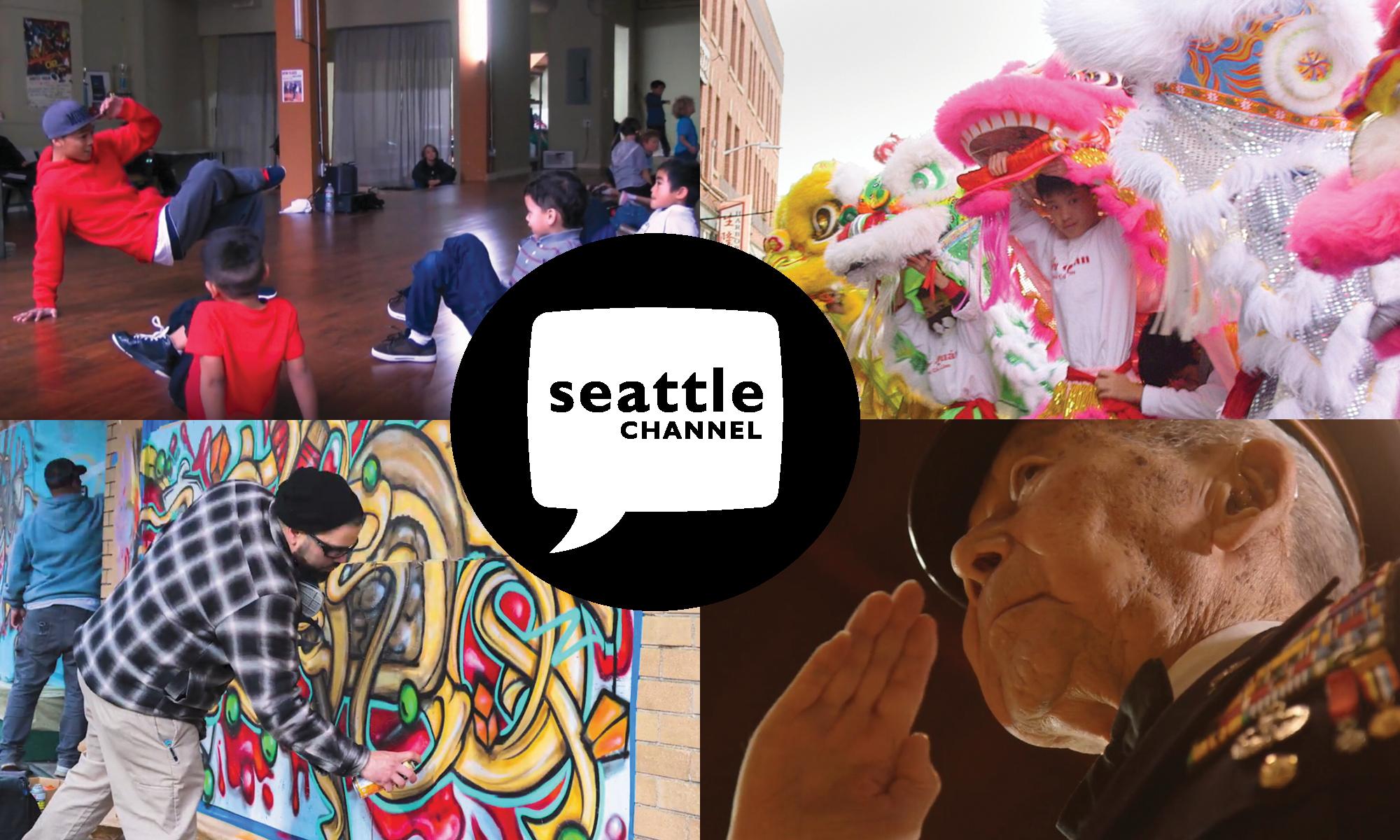
BY ERIN JONES / SEATTLE CHANNEL MULTIMEDIA INTERN
Chinese immigrants moved to Seattle starting back in the 1860s, followed by Japanese in the 1880s, and then Pacific Islanders in the early 1900s. Today, Seattle’s Asian and Pacific Islander communities make up more than 15 percent of the city’s population, representing about 26 different ethnic groups with over 67 unique languages and dialects spoken. Their rich culture and history are forever woven into Seattle’s story.
In honor of Asian American & Pacific Islander Heritage Month, hear stories of Seattleites in their own words in these videos – from artists, to authors, to business owners, and more – from the Seattle Channel archives.
Seattle Center Féstal
The Seattle Center puts on a series of cultural celebrations that feature talented Asian and Pacific Islander American performers. Unfortunately, Féstal has been canceled this year due to the COVID-19 pandemic, but you can still enjoy the festive spirit with this 2018 feature on the colorful annual event.
Chinatown’s Oldest Restaurant, Tai Tung
Established in 1935, Tai Tung is the city’s oldest Chinese restaurant. Stepping inside the establishment is like walking into a time machine; not much has changed in its 80 years, including much of the food it serves. Among Tai Tung’s favorite menu items is a dish enjoyed by one of the restaurant’s most famous customers, actor and martial artist Bruce Lee.
Asian American Experience at the Wing Luke Museum
In this Wing Luke Museum feature, hear directly from members of the Asian and Pacific Islander American community about their personal experiences. Be sure to follow the Wing Luke Museum on Instagram and keep an eye out for the museum’s re-opening in phase three of Gov. Jay Inslee’s “Safe Start Washington.”
Community Stories: Apna Bhangra Crew
Apna Bhangra Crew (ABC) was created back in 2006 by a group of friends who shared their love for Bhangra, a type of traditional Indian dance. Today, founders of ABC focus on giving back to the community by offering classes to dancers of all ages.
Art Zone: Dragon Cycle by Sara Porkalob
Sara Porkalob is the artist, activist, and creator of the family trilogy “Dragon Cycle.” She believes that telling our stories can change the world, especially when those stories center on the lived experiences of your mother and grandmother.
Community Stories: Fortune & Family
Learn about the Tsue Chong Company, Washington’s oldest noodle and fortune cookie factory located in Seattle’s Chinatown/International District. The family that owns this company has been serving the Seattle community for four generations.
Book Lust with Nancy Pearl featuring Viet Thanh Nguyen
If you need a good read, check these three books by Vietnamese American novelist Viet Thanh Nguyen. In his conversation with Nancy Pearl, he talks about his books, “The Sympathizer,” “Nothing Ever Dies: Vietnam and The Memory of War,” and “The Refugees.” Nygyen is a Pulitzer Prize-winning author whose work reflects his questions of identity and deep roots to Vietnam.
International Examiner Digital Archives
Created in 1974, the International Examiner has long served as an important voice and news source for Seattle’s Asian American and Pacific Islander community, especially since many of their viewpoints and stories have been neglected by the mainstream media. This is highlighted by the newspaper’s impressive collection of iconic and historic photographs, many captured by legendary photographer Dean Wong. A few years ago, the paper began digitally archiving their photographs that so indelibly captured life in the International District.
The Life of Genji Mihara
Genji Mihara left Japan for a better life and found it here in Seattle. But the Japanese attack on Pearl Harbor changed all that. The very next day he was separated from his family by the FBI and spent years living behind barbed wire. Still, Mihara never lost his love for America or his pride in his Japanese heritage. Now, his legacy is being honored locally and across the Pacific Ocean.
An American Hero – Frank Nishimura
“Japantown was empty, and all the Japanese were in the temporary incarceration center on the Puyallup fairgrounds.” Decorated WWII vet Frank Nishimura remembers Executive Order 9066, a law signed by President Franklin D. Roosevelt, that would send people with Japanese ancestry to incarceration camps. Frank’s family sought refuge in Eastern Washington to avoid incarceration, but he would later fight for the country that tried to imprison him. Another Seattle Nisei veteran, Shiro Kashino, also fought in World War II — you can watch Shiro’s story here.
